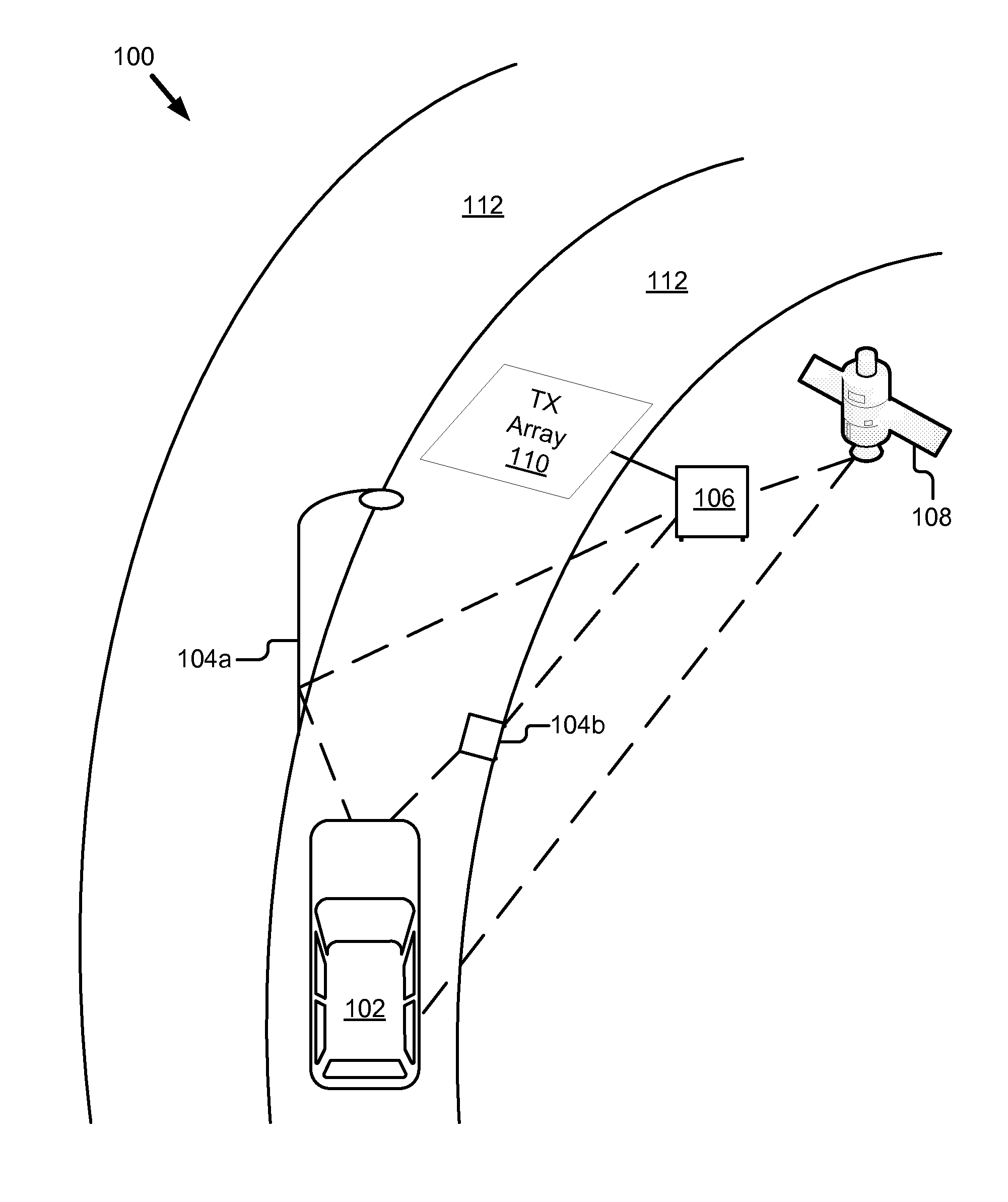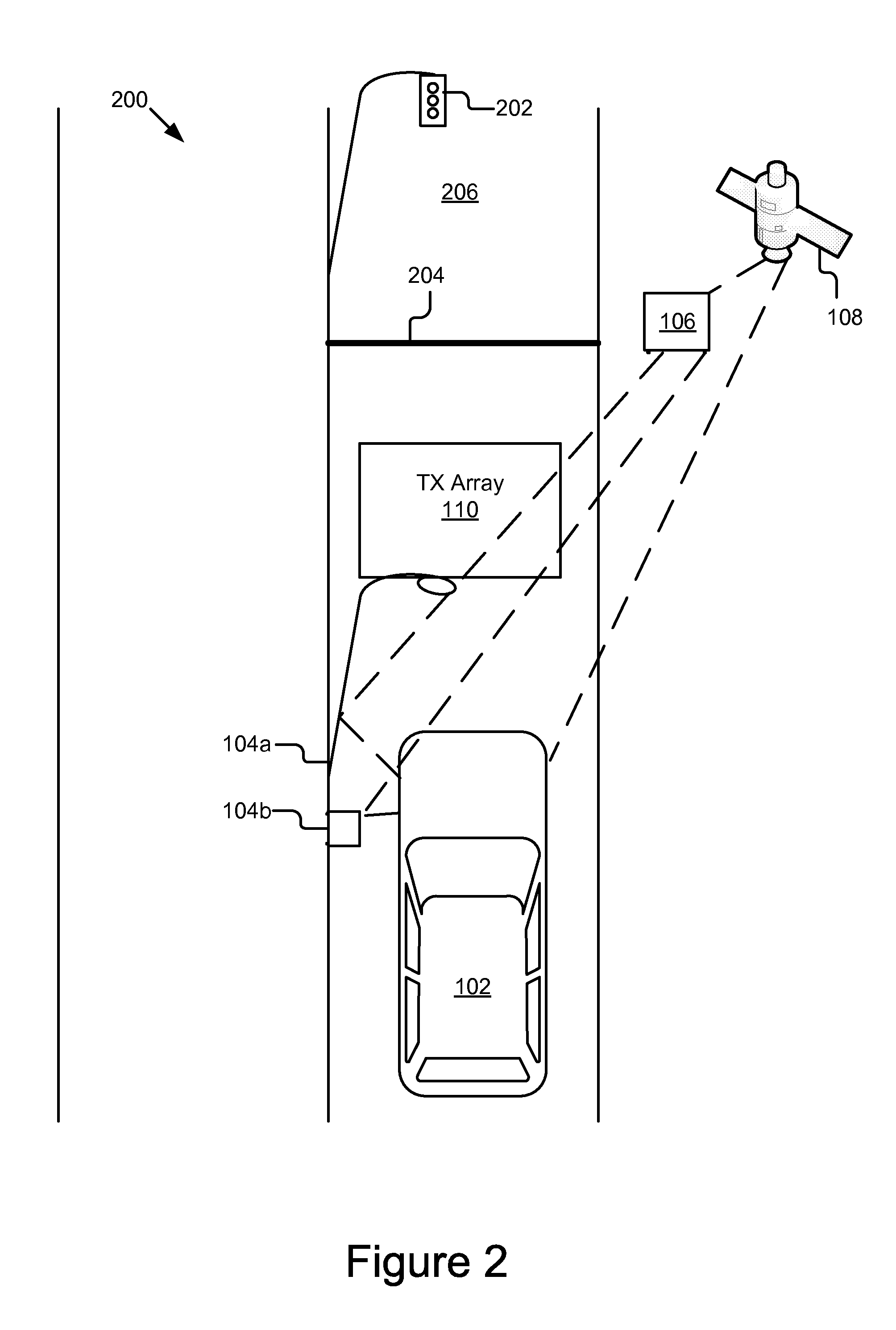Energy transfer systems and methods for mobile vehicles
a technology of energy transfer and mobile vehicles, applied in the field of energy transfer systems and methods for mobile vehicles, can solve the problems of limiting the usefulness of electric vehicles traveling over longer distances, not having enough parking areas, and requiring two if not more hours to recharge the power source of electric vehicles, so as to save space and cos
- Summary
- Abstract
- Description
- Claims
- Application Information
AI Technical Summary
Benefits of technology
Problems solved by technology
Method used
Image
Examples
first embodiment
[0038]Referring now to FIG. 1, an energy transfer system 100 is shown. The energy transfer system 100 includes a mobile vehicle 102, one or more location sensors 104a, 104b, an energy transfer controller 106, optionally a global positioning system 108 and a transmitter array 110. In this embodiment, consistent with the principles of the present invention, an energy transfer system 100 is located along a curved road way 112. The energy transfer system 100 is preferably deployed at locations where the mobile vehicle 102 has reduced speed. In particular, the reduced speed of the mobile vehicle 102 translates into a greater transfer time which means more energy transferred per coil and fewer coils required transfers per mile.
[0039]The mobile vehicle 102 is any type of vehicle that requires electrical power. The mobile vehicle 102 includes various other electrical, mechanical and communications systems available on various hybrid and fully electric vehicles such as the Prius automobile m...
second embodiment
[0044]Referring now to FIG. 2, the energy transfer system 200 is shown. This embodiment of the energy transfer system 200 includes the mobile vehicle 102, one or more location sensors 104a, 104b, an energy transfer controller 106, optionally a global positioning system 108 and the transmitter array 110. Like reference numerals have been used to represent components of the system 200 with the same or similar functionality as system 100.
[0045]In this embodiment, consistent with the principles of the present invention, the energy transfer system 200 is located just before a traffic light 202. A stop line 204 corresponding to the stop light 202 indicates where a vehicle moving past the traffic light 202 should stop. In accordance with the present invention, the transmitter array 110 is positioned in the roadway 206, beneath the surface and a predetermined distance before the stop line 204. For example, the transmitter array 110 is positioned a distance of between ten to fifty feet befor...
PUM
 Login to View More
Login to View More Abstract
Description
Claims
Application Information
 Login to View More
Login to View More - R&D
- Intellectual Property
- Life Sciences
- Materials
- Tech Scout
- Unparalleled Data Quality
- Higher Quality Content
- 60% Fewer Hallucinations
Browse by: Latest US Patents, China's latest patents, Technical Efficacy Thesaurus, Application Domain, Technology Topic, Popular Technical Reports.
© 2025 PatSnap. All rights reserved.Legal|Privacy policy|Modern Slavery Act Transparency Statement|Sitemap|About US| Contact US: help@patsnap.com



